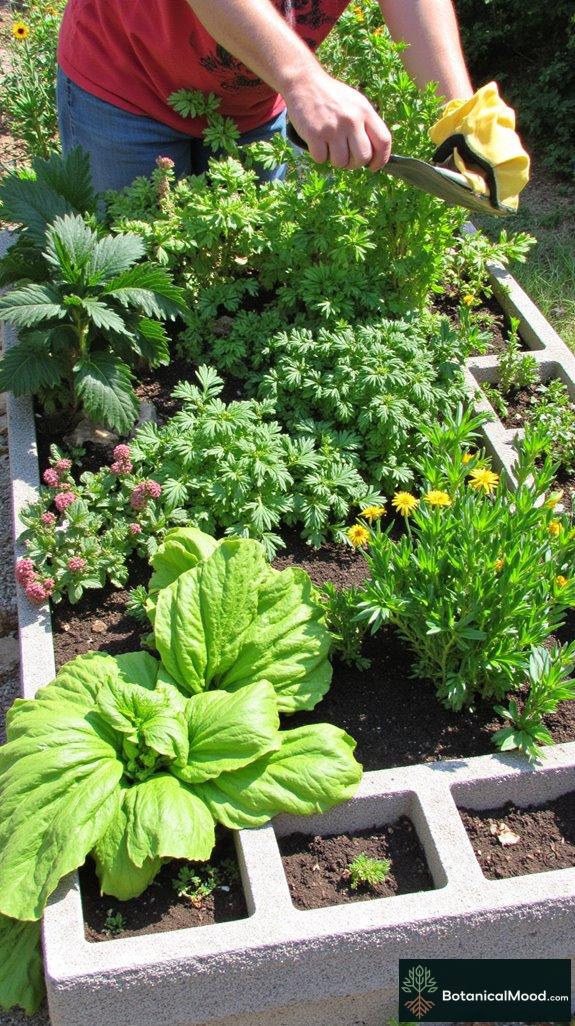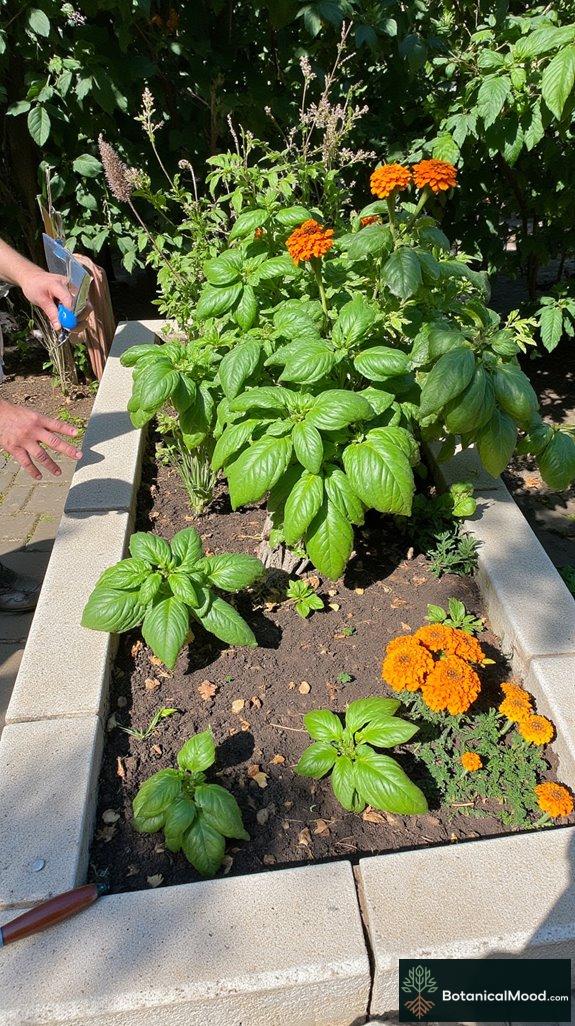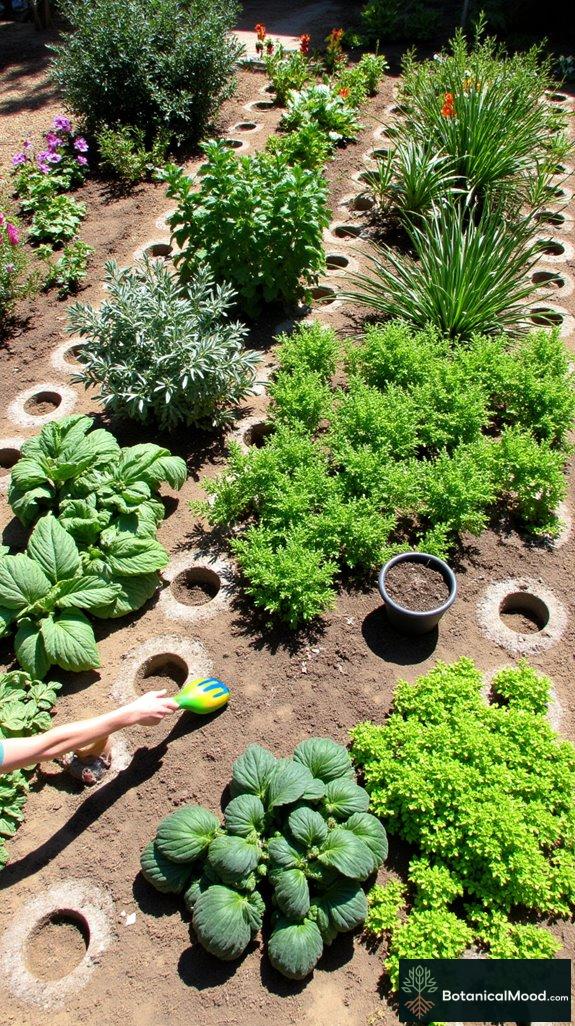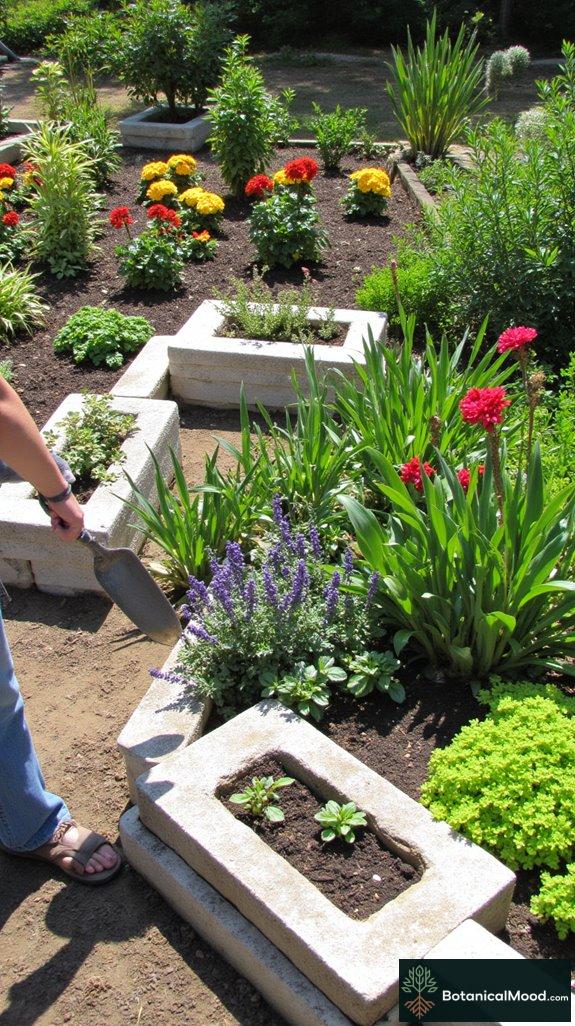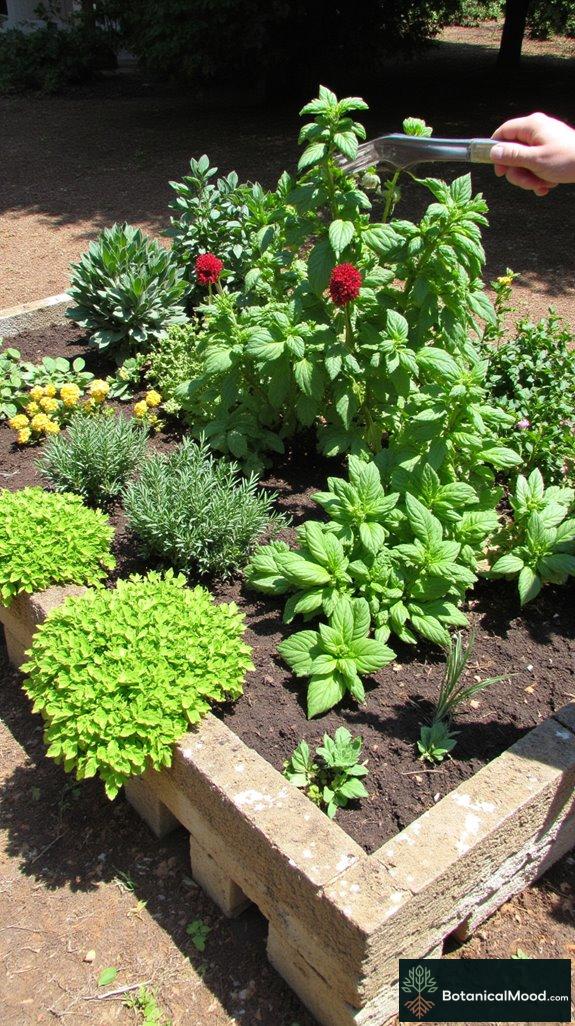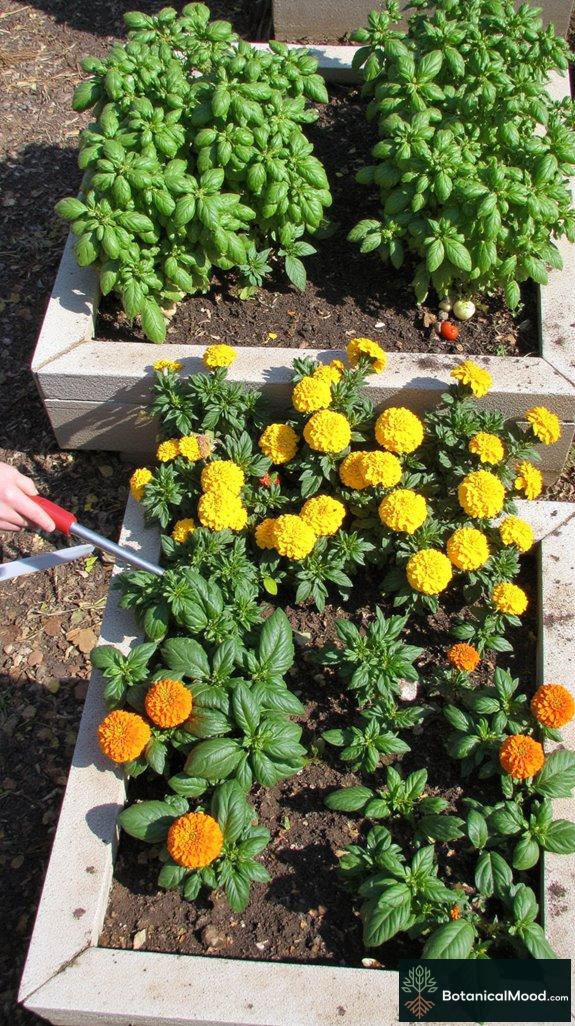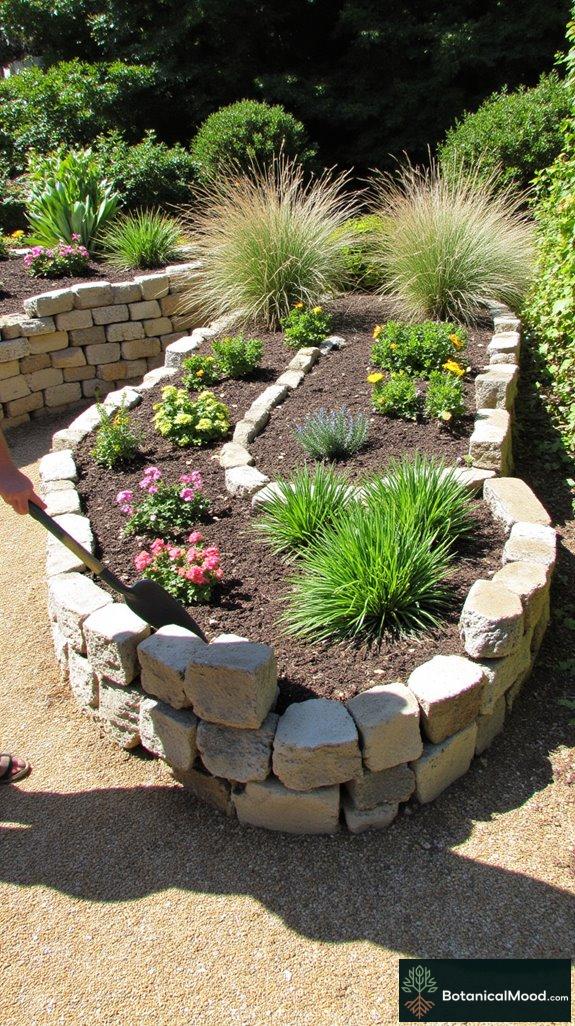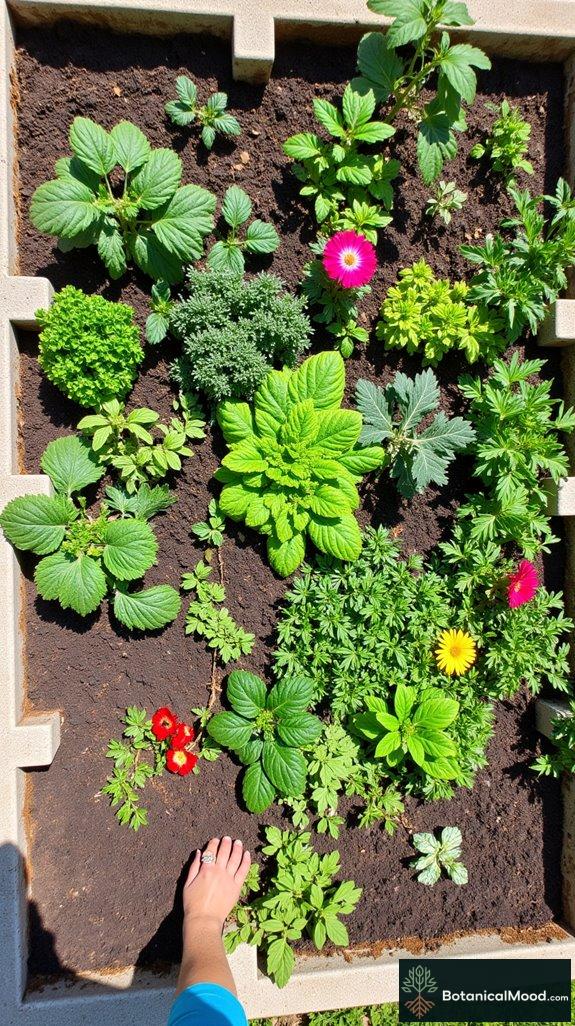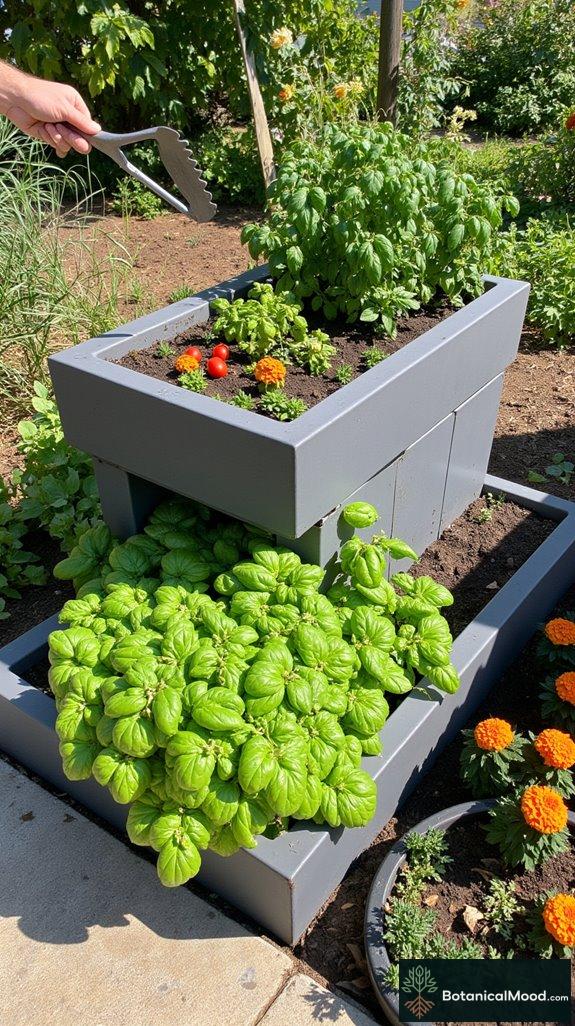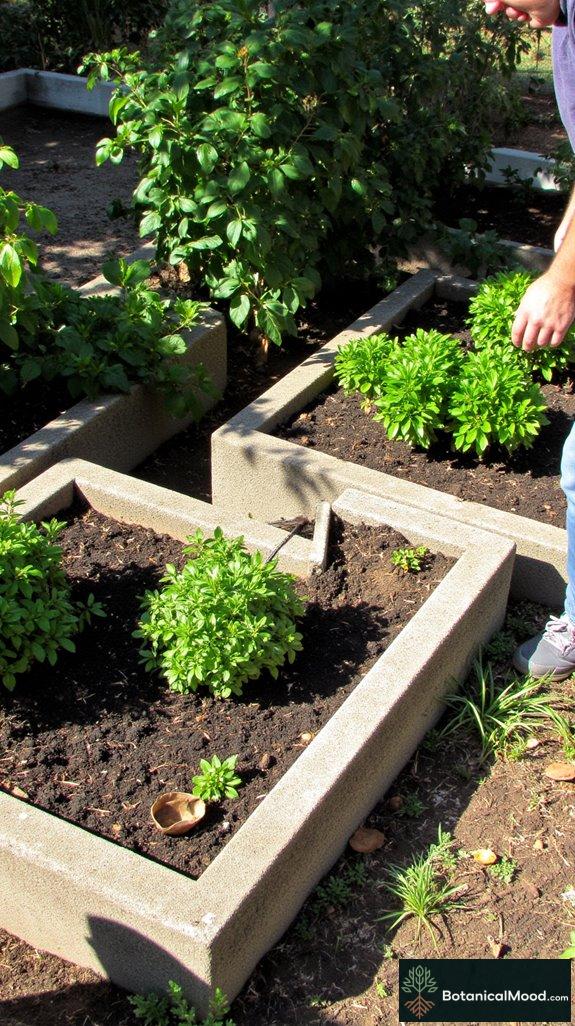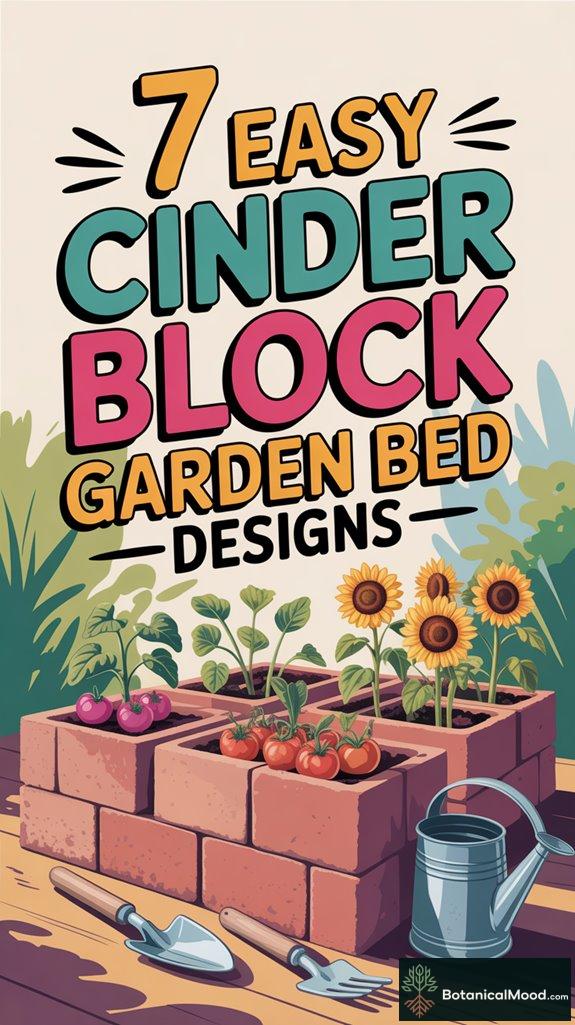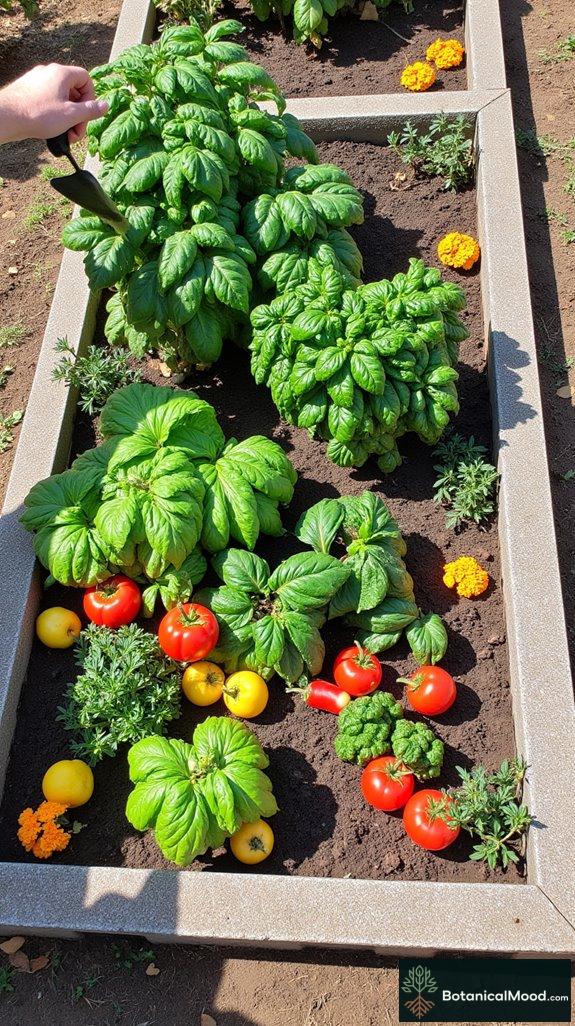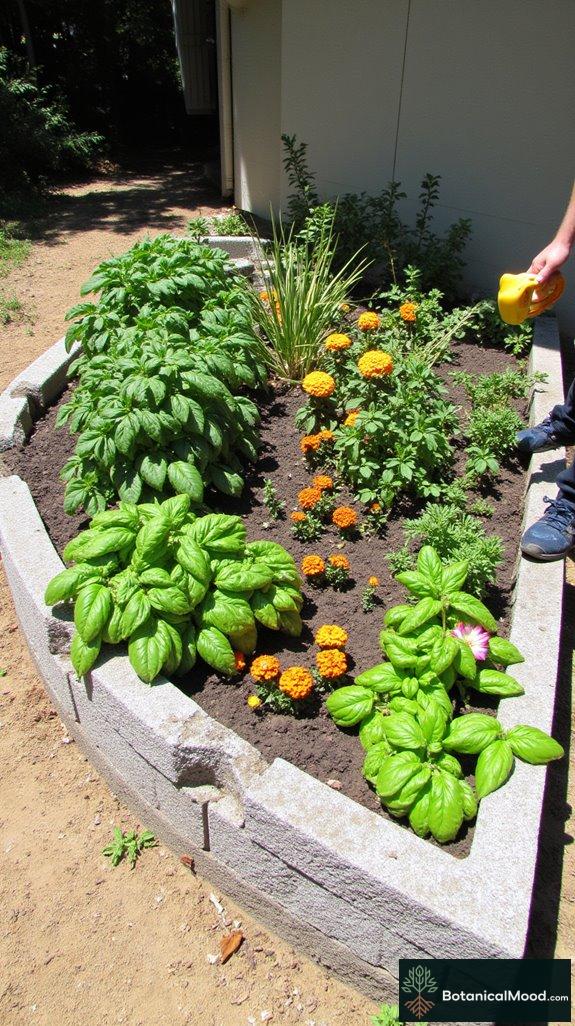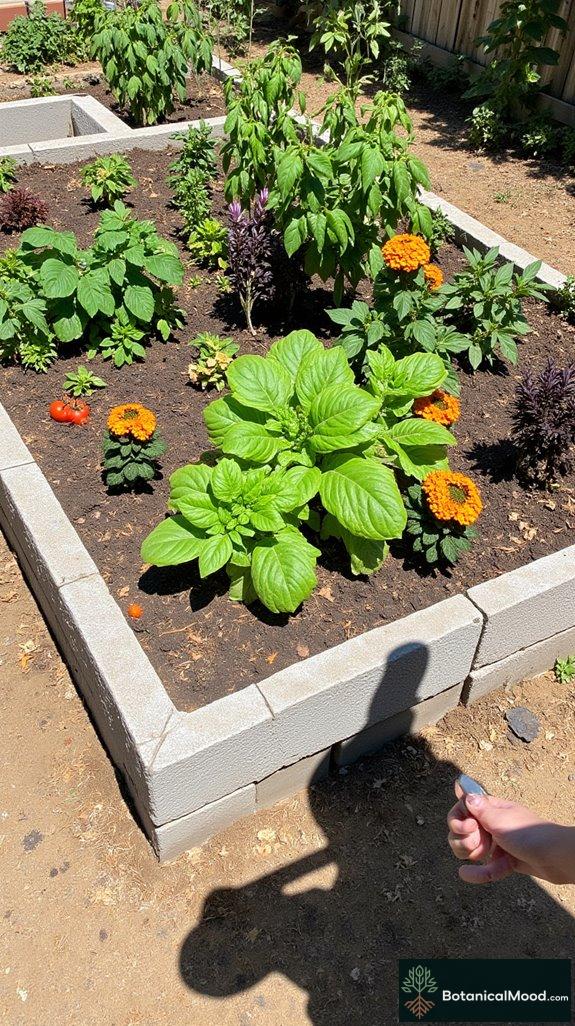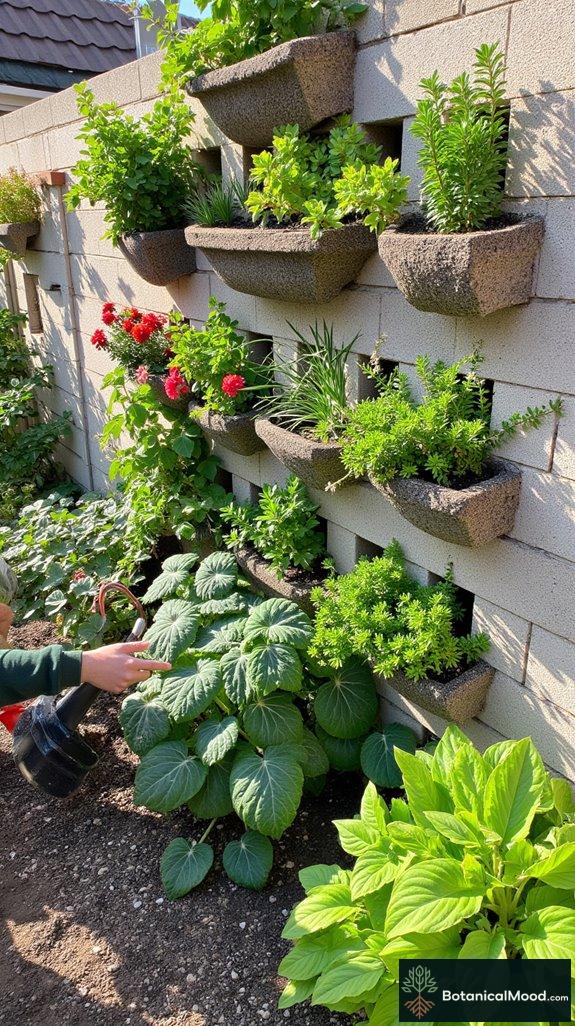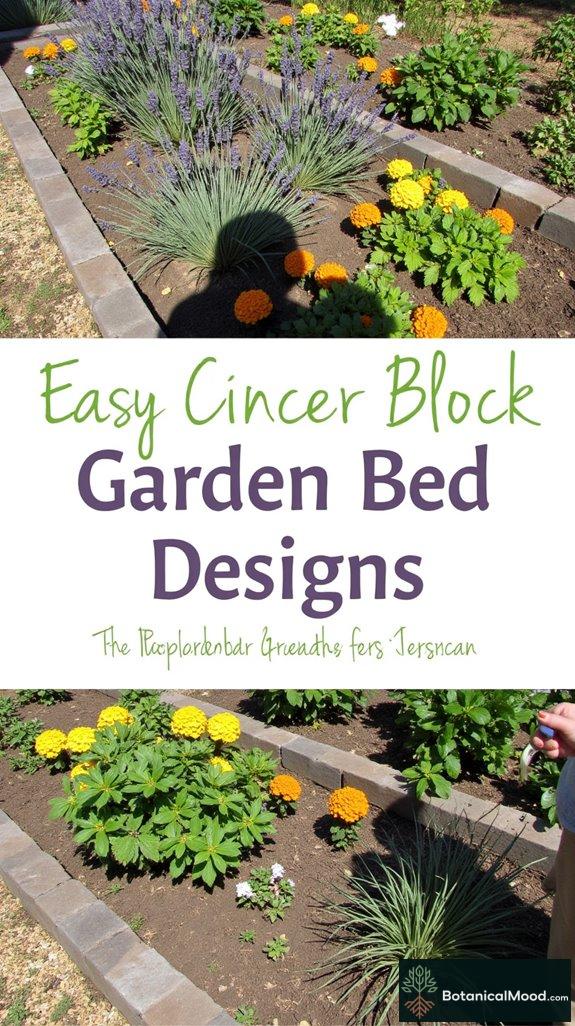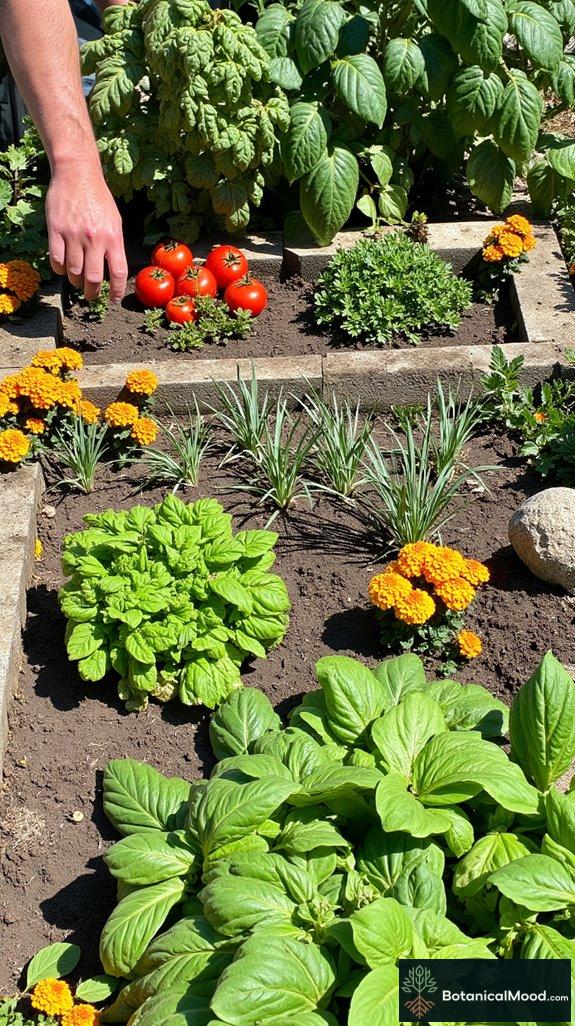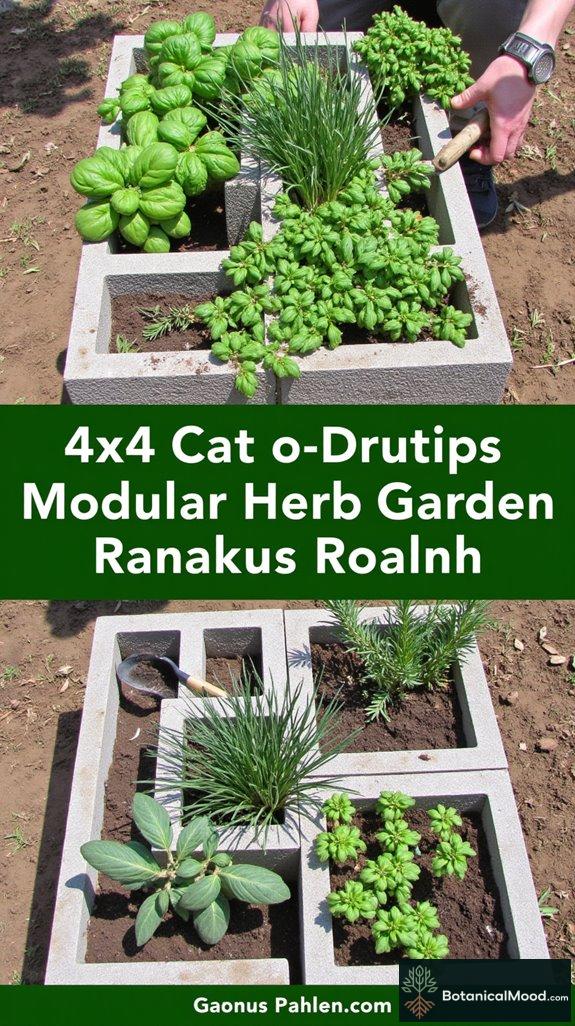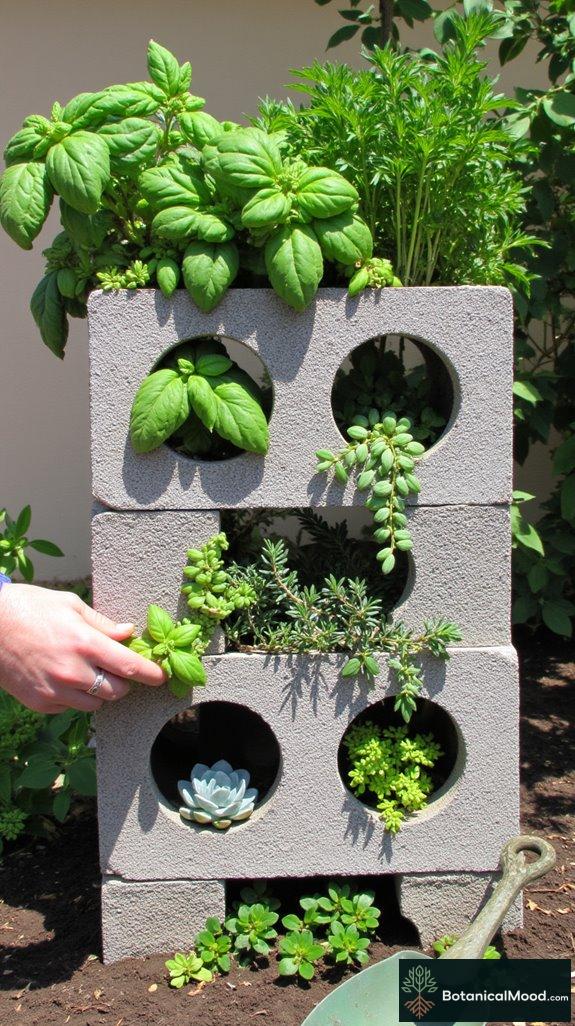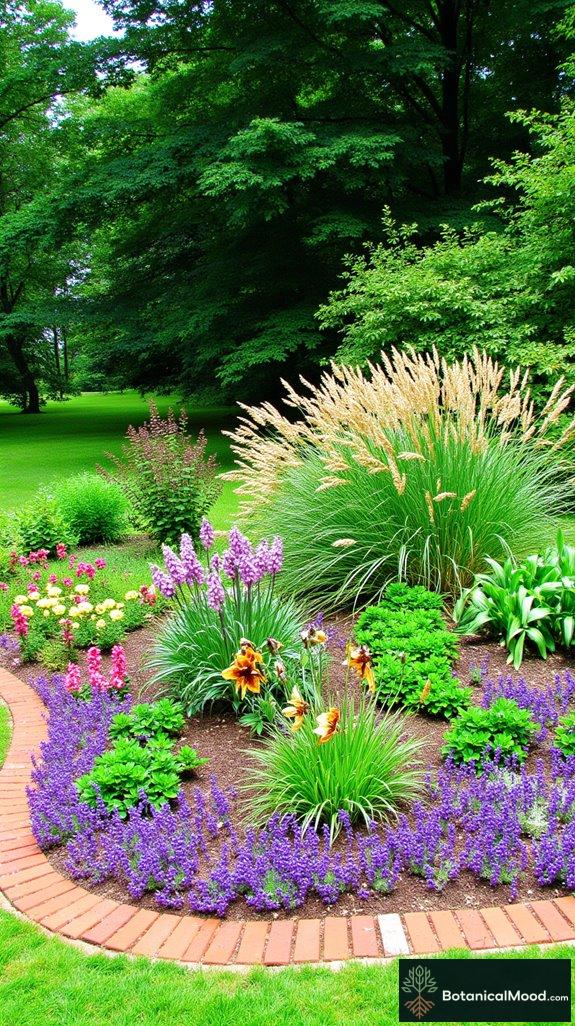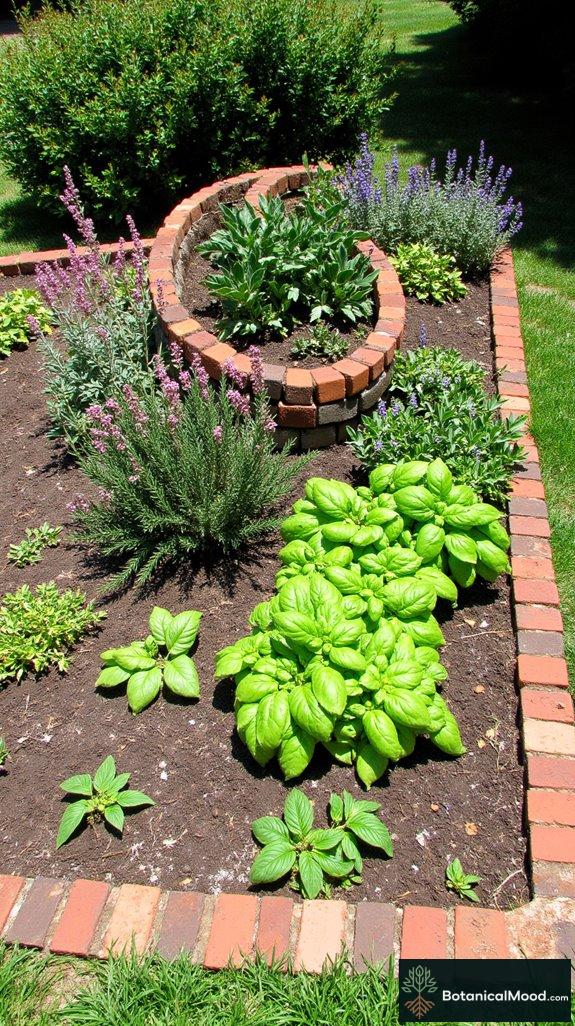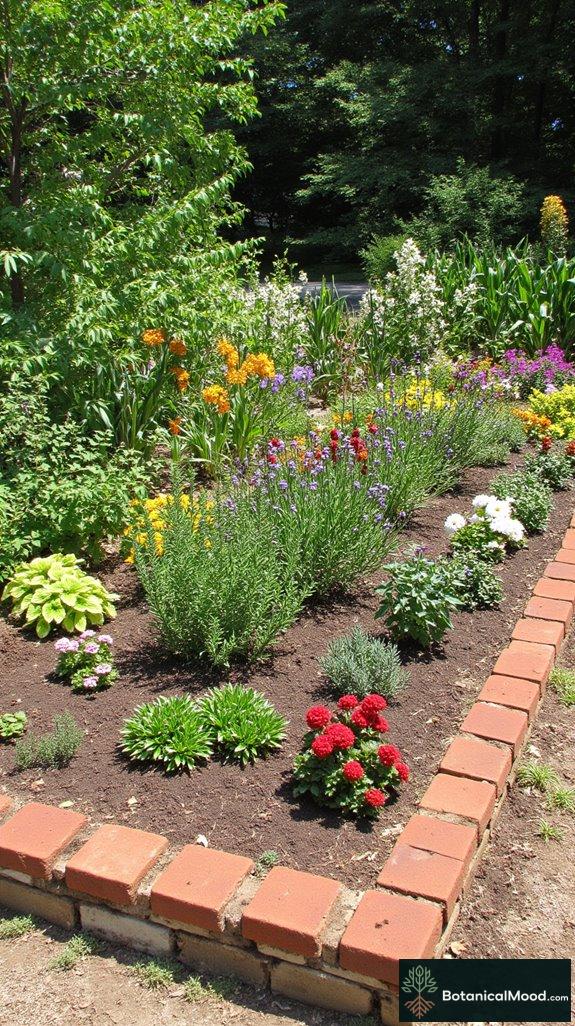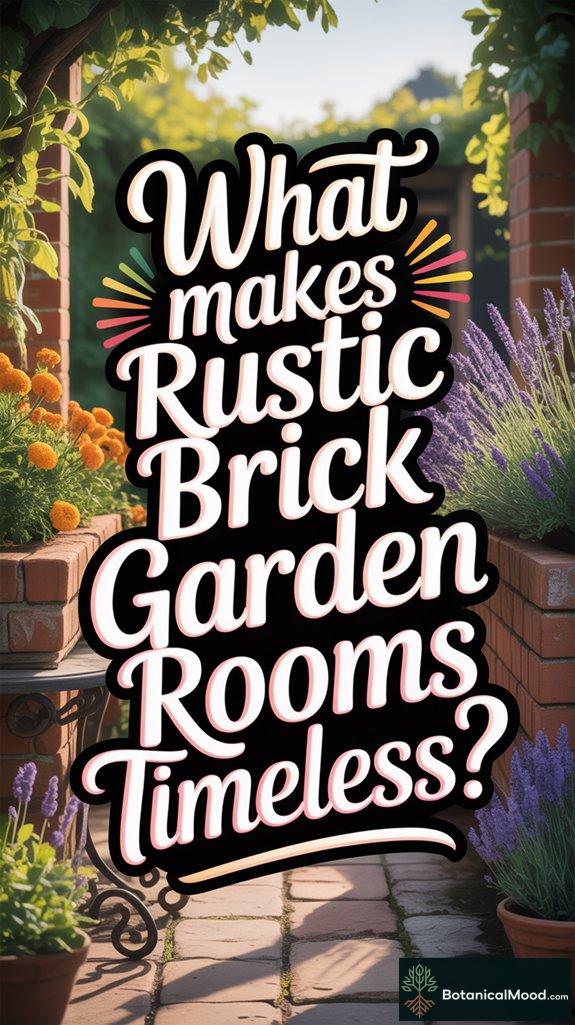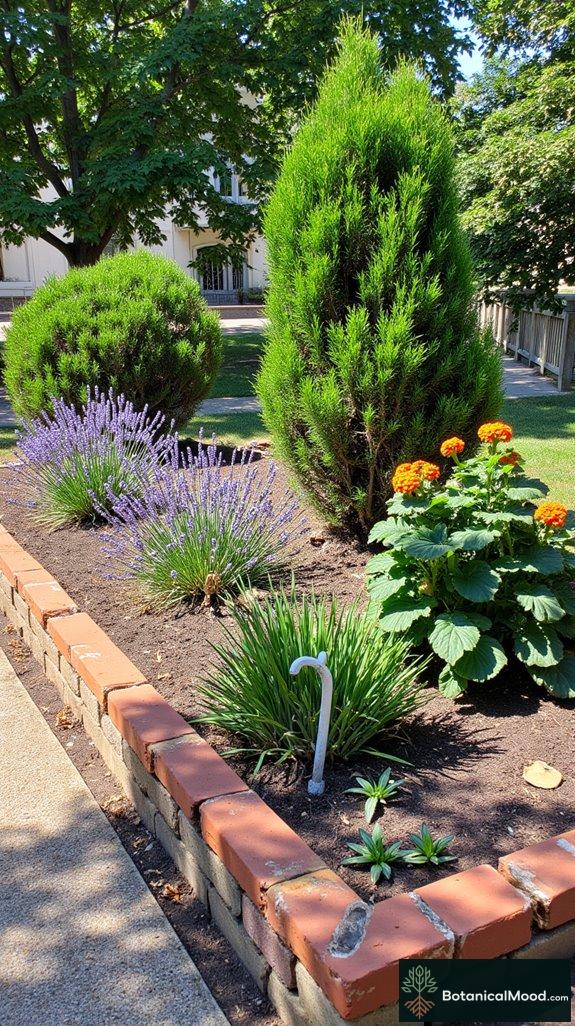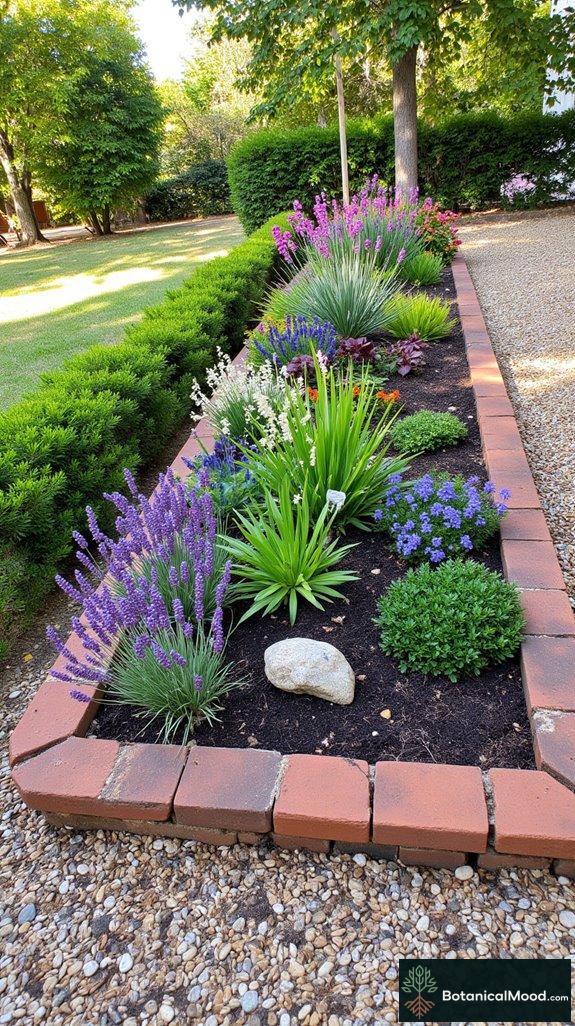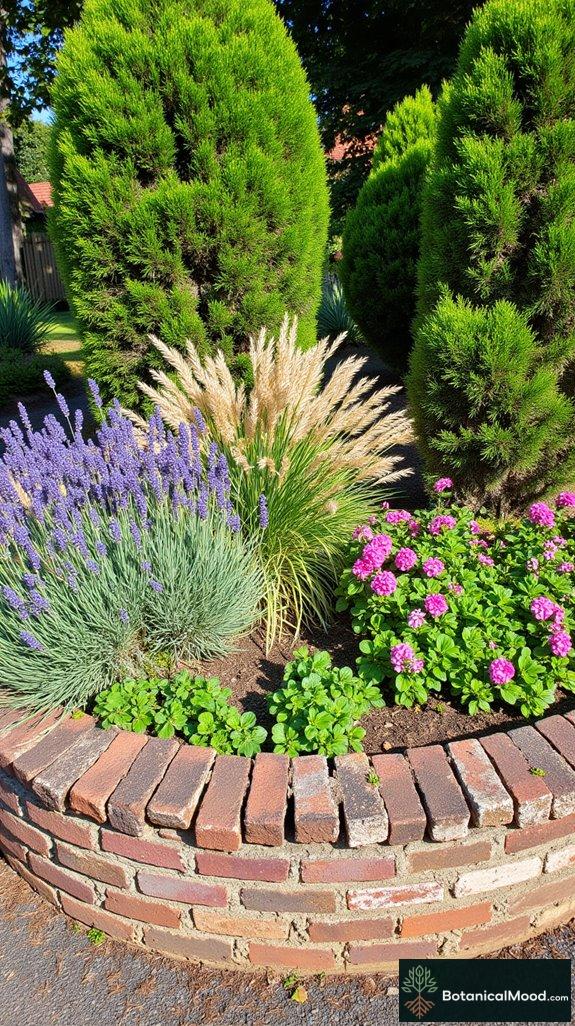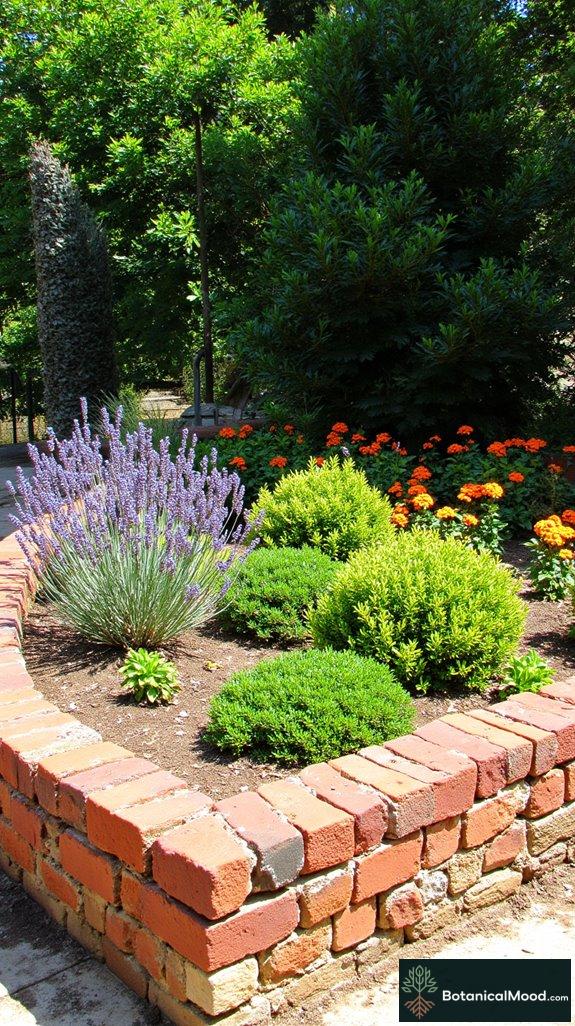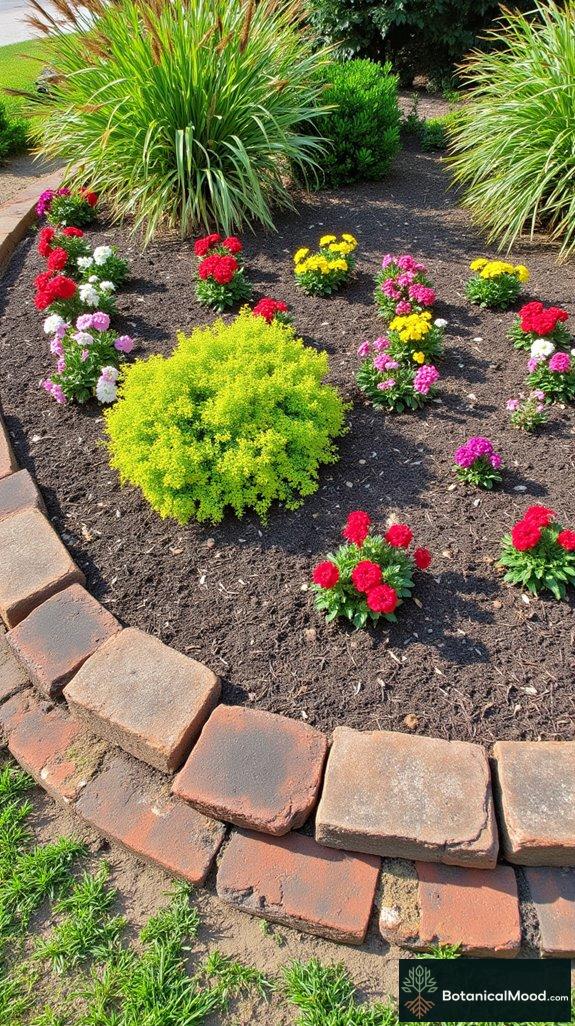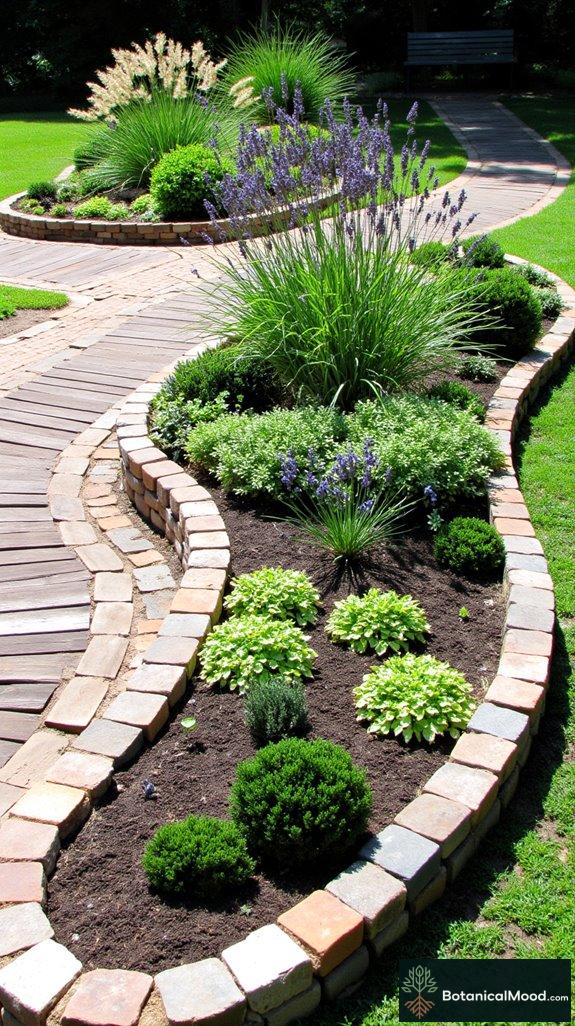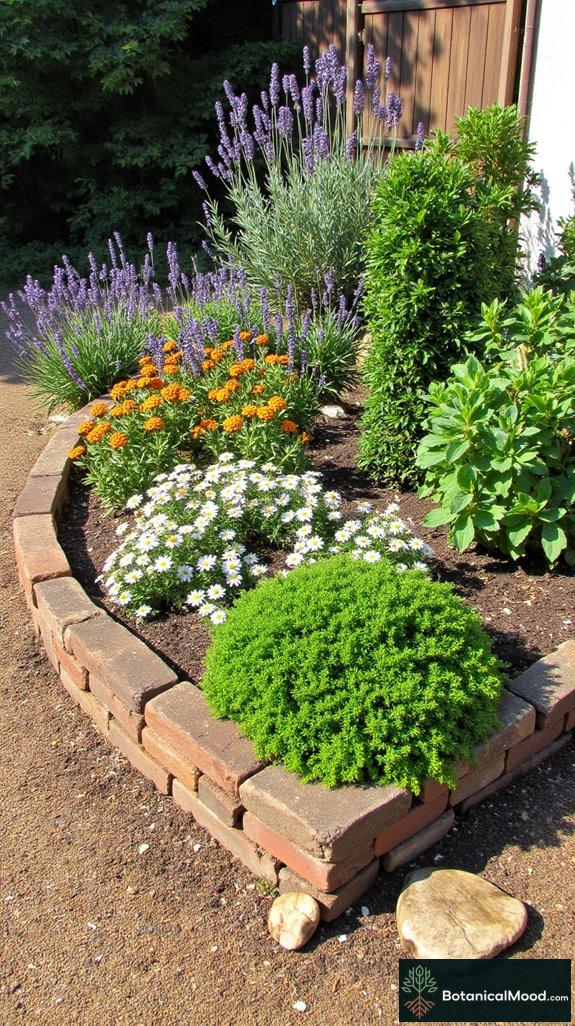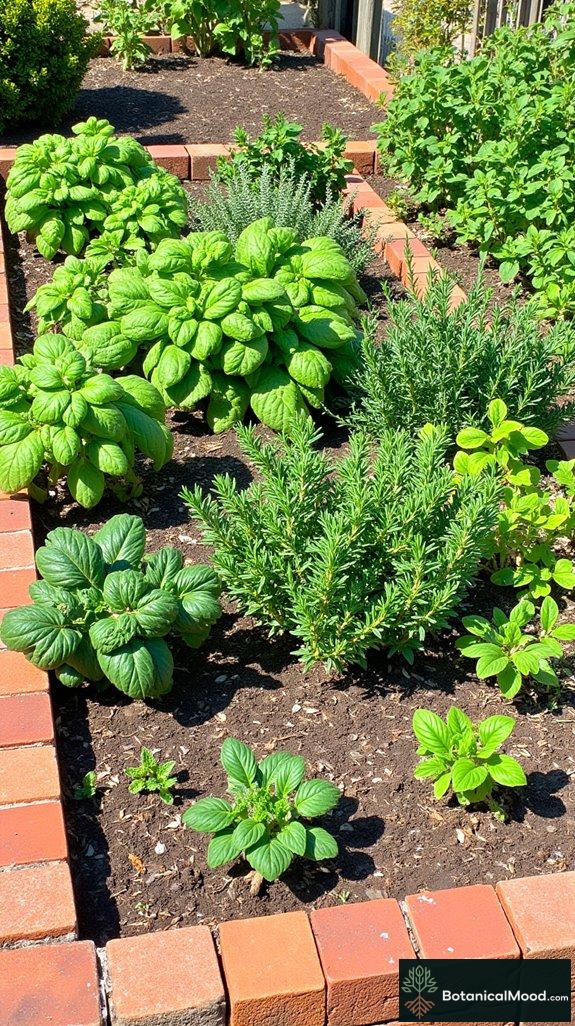I wish I’d discovered cinder block gardens sooner. Seriously, they’re a game changer for grow-happy veggies!
Think classic rectangular raised beds for stability and draining woes. Trust me, I know; my first attempt in an old tire nearly drowned my tomatoes.
Toss in integrated planting blocks for nutrient-deep goodies, or tiered walls for the ambitious sun chasers. You could even go big with multiple beds if you’re channeling your inner farmer.
Just remember: pathways and compost features are essential for sanity in the garden!
My Personal Cinder Block Garden Triumph: A Vegetable Wonderland
Last summer, I decided to embrace the cinder block life. I arranged my blocks into a whimsical zigzag shape. Who needs fancy when you can have funky, right? I was amazed at how the tiered design let the sunlight sneak into every nook while the integrated planting compartments revealed the secret to juicy, bountiful veggies.
It was trial and error, especially when I realized that my layout needed pathways for easy access (I learned that the hard way!). But the butterflies, the vibrant greens, and the luscious tomatoes made it all worth it. Who knew a little concrete could create such a paradise? It’s proof that gardening doesn’t have to be boring!
Quick Takeaways
- Rectangular Layout: Utilize a 2×4 or larger rectangular garden bed for versatile planting space and easy access to all areas of the bed.
- Vertical Gardening: Incorporate trellises for climbing plants, maximizing space and sunlight exposure while keeping shorter plants shaded appropriately.
- Tiered Design: Create a tiered garden bed using cinder blocks to maximize space, aesthetics, and sunlight for compact vegetables and herbs.
- Compartmentalized Planting: Fill hollow cinder block sections with soil for herbs or smaller plants, enhancing drainage and nutrient accessibility.
- Succession Planting: Optimize yields by regularly planting new crops in succession, ensuring continuous harvests throughout the growing season.
Basic Rectangular Raised Bed

The basic rectangular raised bed is a popular planting choice for both novice and experienced gardeners.
The rectangular raised bed is an ideal choice for gardeners of all skill levels, combining simplicity with effective growing conditions.
Constructed from durable cinder blocks, this garden bed typically measures around 4 feet by 8 feet, providing ample space for various vegetables.
The cinder blocks, arranged in a rectangle, allow for excellent drainage and soil warmth.
Filling the bed with a balanced soil mix of compost and topsoil encourages healthy plant growth.
The clean lines of this design create an organized look, perfect for urban gardens or backyard spaces.
Selecting Plants for Your Raised Bed
When choosing plants for your rectangular raised bed, consider factors such as sunlight exposure and growth habits.
Here are some excellent plant options:
- Tomatoes
- Lettuce
- Carrots
- Peppers
- Radishes
- Zucchini
Designing Your Raised Bed Garden
To design and plan your rectangular raised bed, consider the following steps:
- Layout: Decide on a single or double row planting method.
- Spacing: Make sure to space plants adequately; for example, tomatoes should be about 18-24 inches apart.
- Companion Planting: Incorporate companion plants for pest control, like marigolds with tomatoes.
- Succession Planting: Rotate crops seasonally to maximize yield.
Pro Tip: Utilize vertical space by adding trellises for climbing vegetables like cucumbers and beans!
Beyond the Basics: Companion Planting Benefits
Companion planting optimizes plant health by enhancing growth and deterring pests.
For example, planting basil near tomatoes can improve flavor and repel harmful insects, helping create a more diverse and sustainable garden ecosystem that benefits all plant types.
Embrace this technique not only to boost vegetables but to foster a more diverse and sustainable garden ecosystem!
Integrated Planting Blocks

Integrated Planting Blocks
Integrated planting blocks are unique garden beds designed using cinder blocks as both structure and container. These beds typically measure 4 feet by 8 feet, allowing for easy accessibility and light exposure.
Arranged in a rectangular layout, the cinder blocks form hollow compartments filled with nutrient-rich soil, perfect for growing vegetables. This construction guarantees good drainage and provides a solid border to keep your garden organized. Materials used include concrete cinder blocks, soil, and mulch for moisture retention.
Selecting Plants for Integrated Beds
When selecting plants for integrated planting beds, consider companion planting and growth requirements. Here are some suggestions:
- Basil
- Tomatoes
- Peppers
- Lettuce
- Radishes
Designing Your Integrated Planting Bed
To design an integrated bed, start by sketching a layout that incorporates ample sunlight and drainage areas. Here are some tips:
- Use blocks to create a grid pattern for organization.
- Space taller plants, like tomatoes, at the back and shorter ones, like lettuce, in front.
- Leave at least 12-18 inches between each plant to guarantee air circulation.
Pro tip: Consider creating a trellis with sturdy materials for climbing plants to maximize vertical space.
Additionally, cinder block gardens provide an innovative solution for maximizing planting space while ensuring optimal growth conditions.
Exploring Vertical Gardening Techniques
Vertical gardening is an innovative way to enhance small garden spaces. Utilizing trellises, wall planters, or hanging containers, you can grow a variety of herbs, flowers, and vegetables upwards rather than outwards, maximizing your yield and conserving space.
Embrace this technique to create a stunning green wall or vertical garden that adds both beauty and functionality to your gardening space.
Tiered Terraced Walls
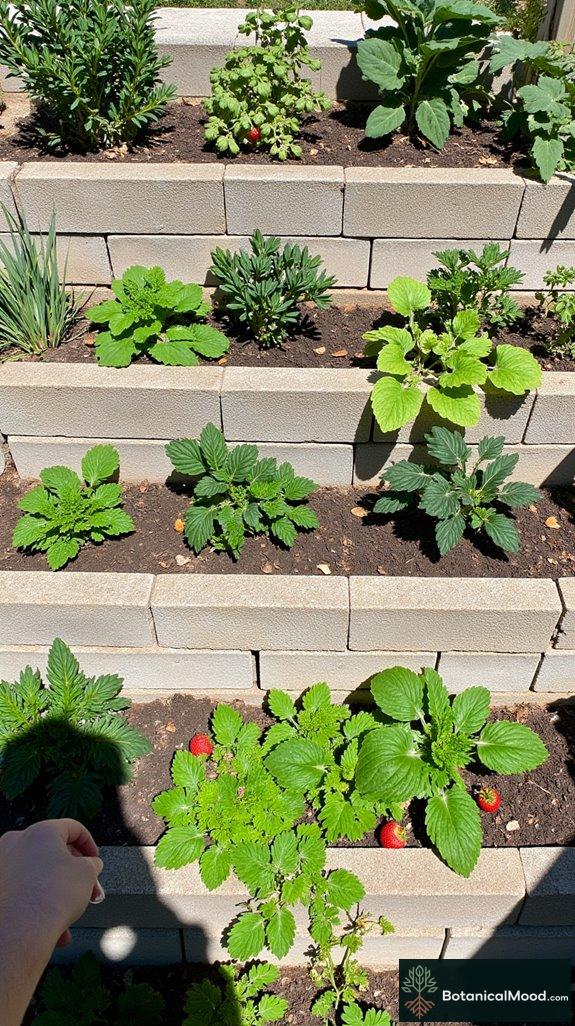
Tiered terraced walls are an innovative planting bed design that maximizes space and enhances the garden’s aesthetics. Typically constructed with cinder blocks, these beds vary in size and shape, often resembling steps cascading down a slope. Each tier is filled with nutrient-rich soil, allowing for proper drainage and root growth.
Common plants for these beds include compact vegetables like lettuce, herbs such as basil and oregano, and trailing plants like strawberries. Building a terraced wall involves stacking cinder blocks securely and filling them with a good quality potting mix. Additionally, cinder block modular beds allow for easy expansion and reconfiguration as your gardening needs change.
Selecting Plants for Tiered Beds
Choosing plants for tiered terraced walls requires considering sunlight, growth habits, and space. Here are some suggestions:
- Lettuce
- Spinach
- Basil
- Oregano
- Strawberries
- Radishes
Designing a Tiered Planting Bed
To design an effective tiered planting bed, follow these tips:
- Assess your garden’s sunlight and drainage.
- Choose plants with varying heights for visual appeal.
- Plan for companion planting to boost growth.
- Space plants 6-12 inches apart to allow for mature growth.
- Avoid overcrowding to promote airflow and reduce pests.
Pro tip: Arrange taller plants at the back or top tier and shorter ones in front to guarantee all plants are visible and receive adequate sunlight.
Effective Watering Techniques for Gardens
Proper watering is crucial for healthy plant growth. Use soaker hoses or drip irrigation for efficient moisture delivery.
Regularly check soil moisture levels to avoid over or under-watering. Incorporating mulch can help retain soil moisture while suppressing weeds, guaranteeing your garden thrives throughout the growing season.
Multiple Bed Farm-Scale Layout

Multiple Bed Farm-Scale Layout
A multiple bed farm-scale layout is an efficient design for vegetable gardening, ideal for maximizing space and yielding a bountiful harvest.
Each bed typically measures 4 feet wide and 8 to 12 feet long, arranged in a grid or staggered pattern. Constructed using durable cinder blocks, these raised beds improve drainage and soil temperature. Fill each bed with a nutrient-rich soil mix, fostering healthy plant growth. Common plants include tomatoes, peppers, cucumbers, and lettuces, which thrive in these contained spaces. Additionally, modular concrete block gardens provide flexibility in designing and expanding your vegetable garden as needed.
Raised beds, measuring 4 feet by 8 to 12 feet, enhance drainage and soil health, ideal for growing vegetables like tomatoes and peppers.
Selecting Plants for This Bed
When choosing plants for your multiple bed layout, consider their growth habits and sunlight requirements. Here’s a suggested list:
- Tomatoes
- Bell Peppers
- Zucchini
- Carrots
- Basil
- Spinach
Designing Your Multiple Bed Layout
Designing your planting bed involves thoughtful arrangement and spacing. Here are some tips:
- Plan the layout with pathways for easy access.
- Space tall plants (like tomatoes) on the north side to avoid shading shorter plants.
- Ascertain adequate sunlight and airflow between beds.
Pro Tips:
- Use companion planting methods for pest control.
- Include herbs among vegetables to enhance flavor and deter pests.
- Consider succession planting to optimize space throughout the growing season.
Exploring Vertical Gardening Techniques
Vertical gardening is a creative and space-saving solution for small areas.
By utilizing trellises, wall planters, and hanging systems, you can grow an array of vegetables, like pole beans and strawberries, while maximizing sunlight exposure.
This method not only saves ground space but also adds visual interest to your garden.
Multi-Functional Garden Features

Cinder block garden beds are versatile, offering a sturdy structure for growing vegetables. These beds can be customized in size, typically ranging from 2×4 feet to larger configurations, depending on space. Cinder blocks, which are affordable, durable, and easy to assemble, create a rectangular layout on any level surface.
The arrangement allows for excellent drainage while providing ample soil depth (12-18 inches) for vegetables. You can plant herbs like basil and parsley, leafy greens such as spinach and lettuce, or root vegetables like carrots and radishes.
Selecting Plants for Cinder Block Beds
When selecting plants for your cinder block bed, consider your climate, sunlight, and the season. Choose plants that thrive in your specific environment. Here are some suggestions:
- Leafy greens: Spinach, Lettuce
- Herbs: Basil, Cilantro
- Onions: Green onions, Garlic
- Root vegetables: Carrots, Radishes
Designing Your Cinder Block Planting Bed
To design your cinder block garden bed effectively, start by sketching a layout to maximize space. Here are tips for arrangements:
- Place taller plants on the north side to avoid shading shorter ones.
- Space plants according to their growth habits (e.g., 6-12 inches apart for leafy greens).
- Use blocks as pathways to allow for easy access and maintenance.
Pro tip: Incorporate vertical gardening techniques by placing trellises in the center for climbing vegetables like cucumbers and beans.
Benefits of Compost in Gardening
Incorporating compost into your garden not only improves soil structure but also enhances nutrient content, leading to healthier plants and higher yields. A well-designed garden helps in creating an ideal habitat for beneficial organisms that further enrich the soil health.
Compost retains moisture and can suppress weeds, creating an overall thriving environment for your vegetable garden.
Spring Weeding and Mulching

As the vibrant colors of spring emerge, it’s time to address the essential tasks of weeding and mulching in the garden.
These spring maintenance efforts not only enhance the beauty of your cinder block vegetable garden but also promote soil health. Incorporating industrial water features can also elevate your garden’s aesthetic while contributing to a serene environment.
Here are my top four tips to get started:
- Remove all existing weeds that compete with your plants for nutrients.
- Check the soil for nutrient levels and amend as needed.
- Apply a protective layer of organic mulch to retain moisture.
- Reassess the layout periodically to guarantee ideal growth and sun exposure.
Your plants will thrive with these simple steps!
Summary
Cinder blocks have transformed my gardening experience, creating a sturdy base for my vegetable patches. From simple rectangular beds to multi-functional designs, these blocks not only support my tomatoes and cucumbers but also spark my creativity and resilience in gardening. Each harvest reflects my dedication.
I’d love to hear your experiences with cinder block gardening! What designs have you tried?
Feel free to share pictures of your garden and tell us how you designed it. I’m excited to see your creativity in action!
References
- https://olivegreyavenue.com/diy-raised-garden-bed/
- https://www.youtube.com/watch?v=KLCDlC8A6-w
- https://anartfulmom.com/raised-bed-gardening-with-cinder-blocks/
- https://www.houzz.com/photos/query/cinder-block-garden
- https://scurlockfarms.com/designing-and-creating-our-dream-garden/
- https://abundantminigardens.com/how-to-create-an-awesome-raised-garden-bed/
- https://www.youtube.com/shorts/F2k1EjXQW5Y






